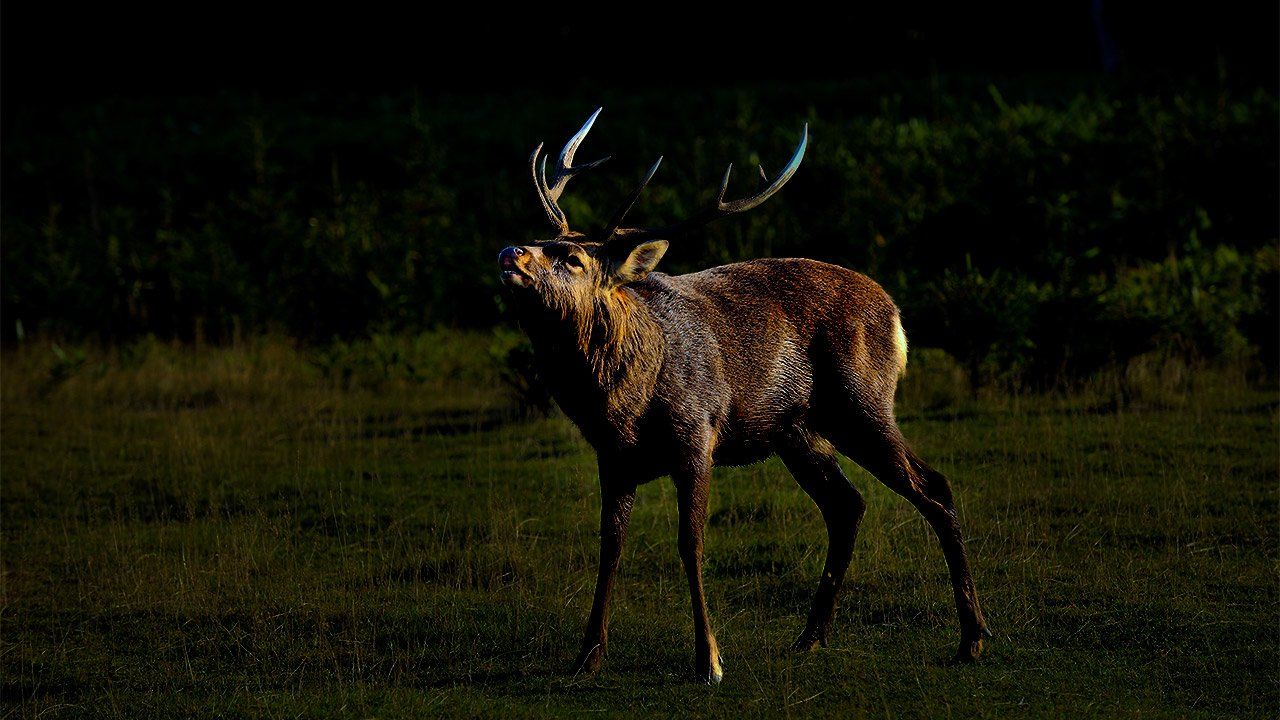
A Journey Through Japanese Haiku
Night Deer
Culture Environment Lifestyle- English
- 日本語
- 简体字
- 繁體字
- Français
- Español
- العربية
- Русский
びいと啼尻声かなし夜の鹿 芭蕉
Bii to naku / shirigoe kanashi / yoru no shika
A bawling cry
lingers, mournful—
night deer(Poem by Bashō, written in 1694.)
The Kasuga Taisha in Nara has regarded deer as sacred messengers of the gods since the Heian period (794–1185). Today the animals roam freely through Nara Park, and have become a popular tourist draw. Bashō was apparently keen to write haiku about the deer when he visited Nara, and penned three verses that we know of. This particular haiku he composed toward the end of his life.
According to Oi nikki (Knapsack Diary) by Bashō’s disciple Shikō, on October 22, 1694, Bashō left his hometown of Iga Ueno, heading for Osaka, and spent the night near Sarusawa Pond in Nara. The sky was clear with a bright moon, and as Bashō heard deer calling out, he set off on a night walk and composed the above haiku.
The cries of stags in mating season have been a common literary theme since ancient times. However, Bashō was the first to represent this call phonetically as bii. The vernacular word shirigoe was used to represent the fading end of a long cry, which Bashō depicted as an expression of sadness.
This is a reference to a famous poem in the old Kokinshū and Hyakunin isshu anthologies by Sarumaru no Dayū: Okuyama ni / momiji fumiwake / naku shika no / koe kiku toki zo / aki wa kanashiki (When I hear the / stag calling his mate, / treading through maple leaves / deep in the hills, / autumn fills me with sorrow). Bashō adds specificity through a description of the deer’s cry to create his own poetic variation on the theme, grounding it in the haiku style with the phonetic bii and use of the vernacular.
(Originally published in Japanese. Banner photo © Pixta.)

